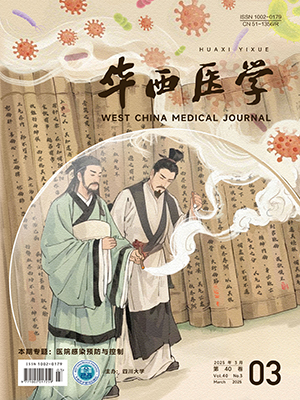【摘要】 目的 探讨脓毒性休克早期液体复苏的临床反应性。 方法 对2008年2月—2010年2月38例采用早期目标定向治疗方案治疗的脓毒性休克患者按是否存活进行分组,就中心静脉压、心率、平均动脉压、输液量、尿量、血乳酸等指标进行评价。 结果 38例采用早期目标定向治疗方案治疗6 h均达标,存活21例(55.26%),死亡17例(44.74%),两组患者输液总量及输液种类差异无统计学意义(P gt;0.05),存活组6、24 h尿量及血乳酸清除率明显优于死亡组(P lt;0.05)。 结论 血乳酸清除率及尿量可作为脓毒性休克液体复苏有效的临床监测指标。
【Abstract】 Objective To study the clinical response to early fluid resuscitation therapy in septic shock patients. Methods Thirty-eight septic shock patients received early goal-directed therapy (EGDT) in the ICU of our hospital from February 2008 to February 2010. The patients were divided into survival group (n=21) and dead group (n=17). Indexes like central venous pressure (CVP), heart rate (HR), mean arterial pressure (MAP), fluid input, urine output, and blood lactate were evaluated. Results Six hours after the EGDT, the results for the patients were all up to standard. There were 21 cases of survival (55.26%) and 17 cases of death (44.74%). The total fluid input and liquid types were similar in the two groups (P gt;0.05). The urine output and lactate clearance at hour 6 and 24 for the survival group were better than that for the dead group (P lt;0.05). Conclusion The lactate clearance and urine output can be regarded as an surveillance indicator of fluid resuscitation for patients with septic shock.
Citation: YANG Mingquan,CAO Jianwei,CHEN Yanmei. Clinical Evaluation of the Response of Patients with Septic Shock to Early Fluid Resuscitation. West China Medical Journal, 2011, 26(6): 863-866. doi: Copy
Copyright © the editorial department of West China Medical Journal of West China Medical Publisher. All rights reserved




